Abstract
Extracts of maize (Zea mays L.) plants contain substances which, in vitro, inhibit an indoleacetic acid (IAA) oxidase enzyme from maize. The extracts can be freed of inhibitors by dialysis or by passage through columns of polyvinylpyrrolidone powder. Inhibitor-free extracts contain an IAA oxidase enzyme which requires a phenolic co-factor and is stimulated by Mn2+.
IAA oxidase inhibitor and total phenol levels were compared for normal maize and for the maize mutant Knotted (Kn). In plants up to 18 days old the level of heat stable, water soluble IAA oxidase inhibitors increases with increasing dosage of the Kn allele. Increased inhibitor content is accompanied, but not paralleled, by increased content of total phenols. Although several inhibitors are present in crude extracts, most inhibition can be attributed to 1 compound. This compound is not destroyed by horseradish peroxidase in the absence of IAA. At pH 3.5 it is not extracted into ether, but it is rendered ether-extractable by incubation in 2 n KOH for 5 hr at room temperature. This compound is tentatively identified as an ester of ferulic acid and some unknown moiety.
Full text
PDF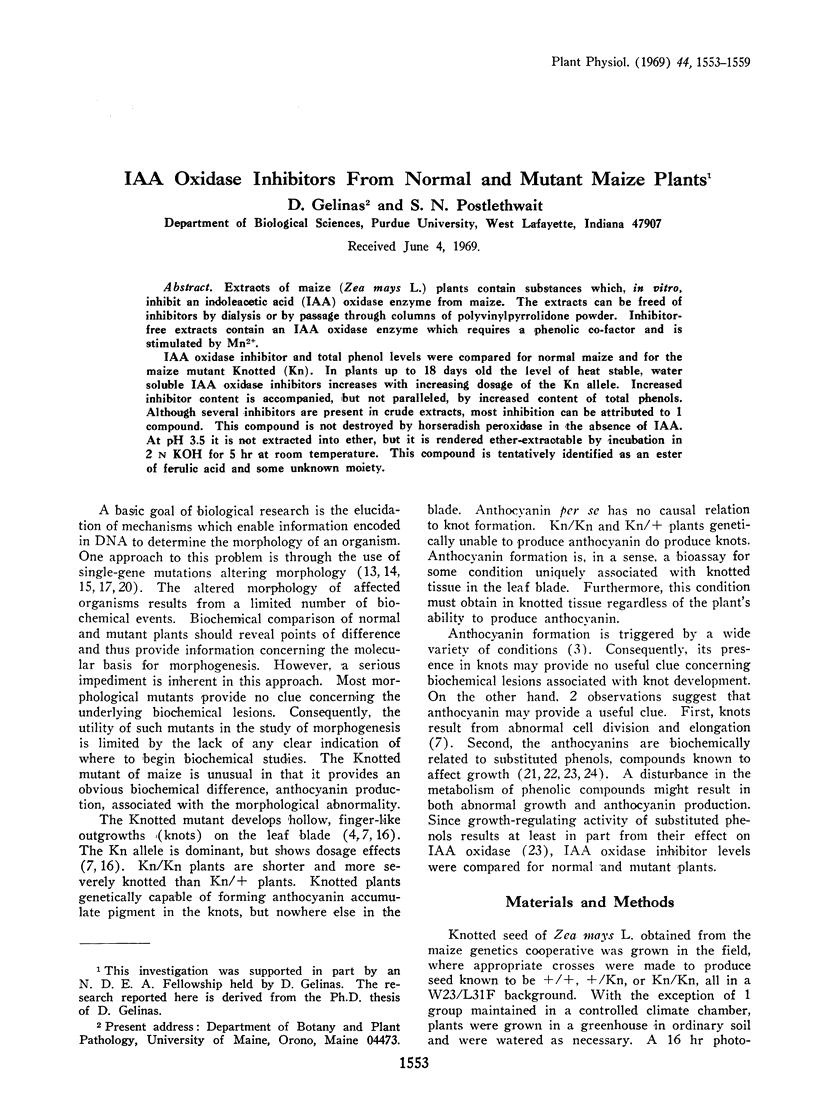
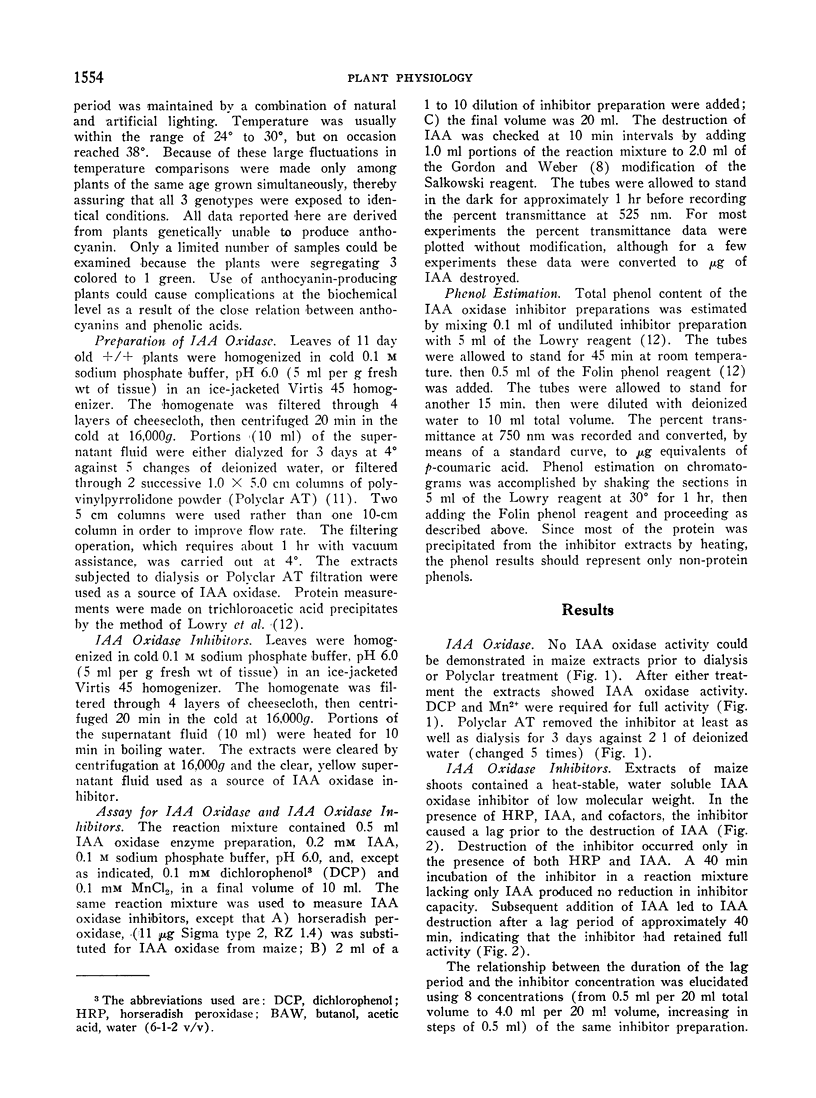
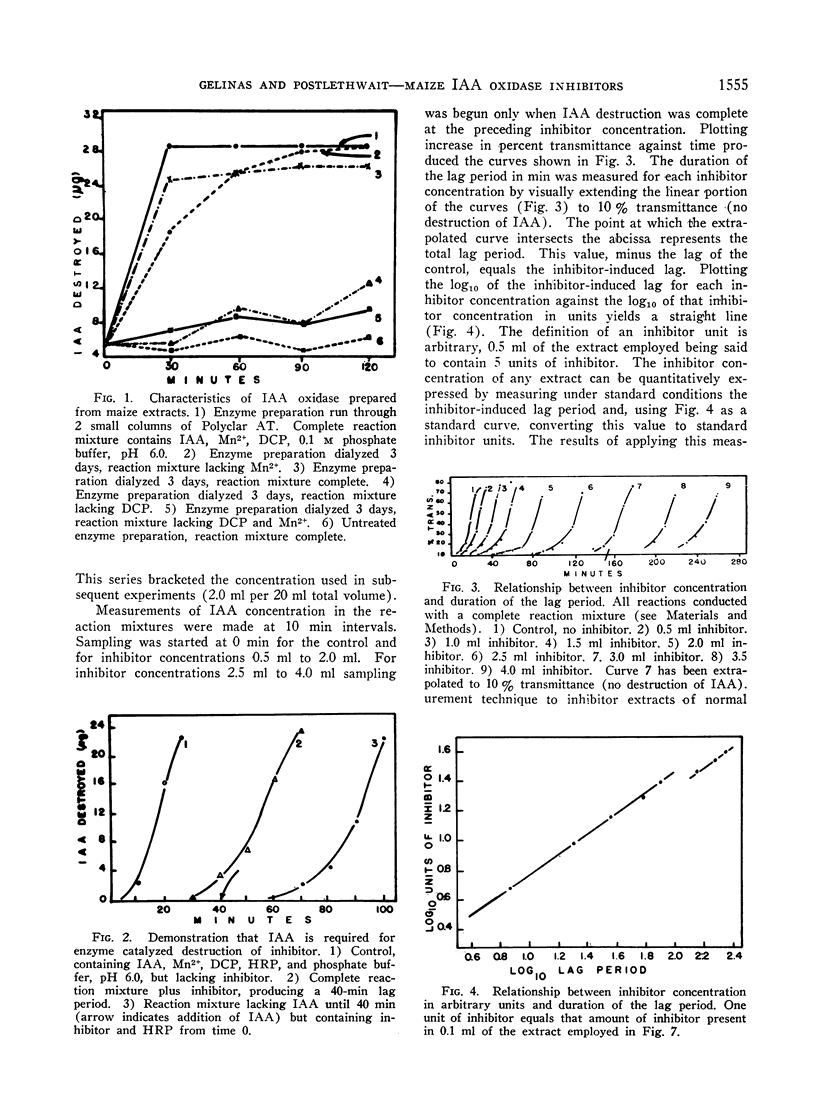
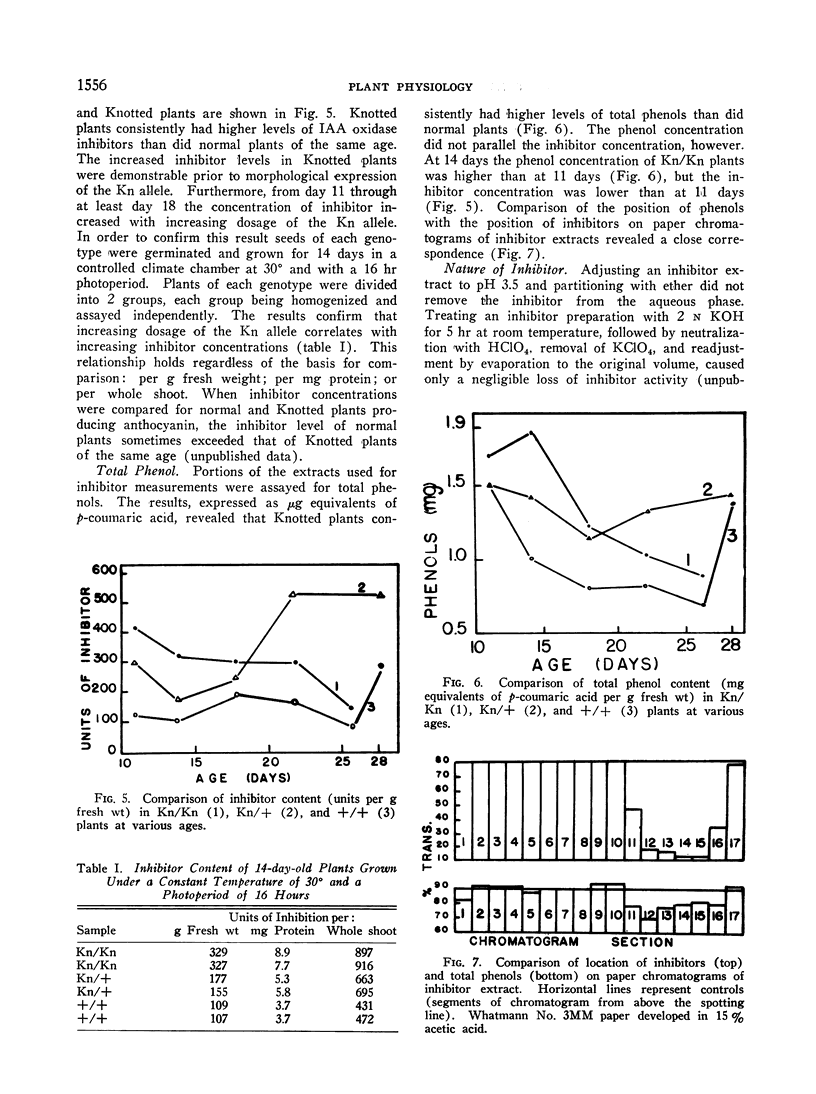

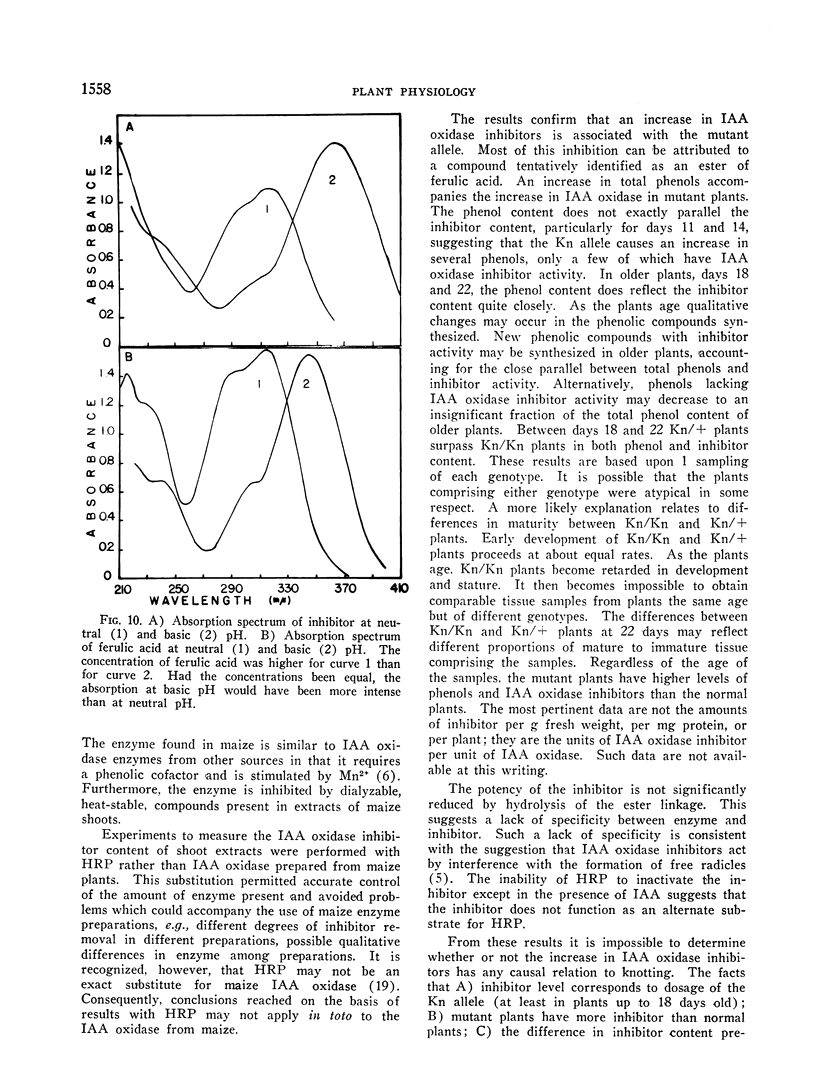

Selected References
These references are in PubMed. This may not be the complete list of references from this article.
- Fox L. R., Purves W. K. Mechanism of Enhancement of IAA Oxidation by 2,4-Dichlorophenol. Plant Physiol. 1968 Mar;43(3):454–456. doi: 10.1104/pp.43.3.454. [DOI] [PMC free article] [PubMed] [Google Scholar]
- Gordon S. A., Weber R. P. COLORIMETRIC ESTIMATION OF INDOLEACETIC ACID. Plant Physiol. 1951 Jan;26(1):192–195. doi: 10.1104/pp.26.1.192. [DOI] [PMC free article] [PubMed] [Google Scholar]
- LOWRY O. H., ROSEBROUGH N. J., FARR A. L., RANDALL R. J. Protein measurement with the Folin phenol reagent. J Biol Chem. 1951 Nov;193(1):265–275. [PubMed] [Google Scholar]
- Sarkissian I., Shah S. S., Stebbins G. L. DIFFERENCES IN FREE AMINO ACID CONTENT OF SEEDLINGS OF AWNED AND HOODED BARLEY, AND THEIR ALTERATION BY CHLORAMPHENICOL TREATMENT. Proc Natl Acad Sci U S A. 1962 Sep;48(9):1513–1519. doi: 10.1073/pnas.48.9.1513. [DOI] [PMC free article] [PubMed] [Google Scholar]
- Sequeira L., Mineo L. Partial purification and kinetics of indoleacetic Acid oxidase from tobacco roots. Plant Physiol. 1966 Sep;41(7):1200–1208. doi: 10.1104/pp.41.7.1200. [DOI] [PMC free article] [PubMed] [Google Scholar]
- Tomaszewski M., Thimann K. V. Interactions of phenolic acids, metallic ions and chelating agents on auxin-induced growth. Plant Physiol. 1966 Nov;41(9):1443–1454. doi: 10.1104/pp.41.9.1443. [DOI] [PMC free article] [PubMed] [Google Scholar]


